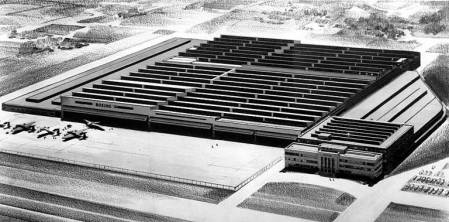Comment Submitted by
Shoreline citizen Jan Stewart,
to Planning Commission on Importance of Preserving our Shoreline Museum and Heritage as Part of our Town Center Planning
July 15, 2010
To the Planning Commission
In the materials staff prepared for this evening, I appreciate seeing things like “the integration with economic development and other strategies, the historical context, the vision of a cultural heart of the city, citizens proud of an inviting place that exemplifies the best of Shoreline – past, present and future. “
This sounds great, but the vision created by our community will end up being nothing more than fantasy, given that the School District now, once again, plans to eliminate the Museum, which basically undermines and diminishes the potential of the Town Center.
It’s an unbelievably bad idea to allow the building’s interior to be disfigured, essentially leaving a façade, in order for the school to use it. Experiencing the building fully preserved as the
Historical Museum for our city and region is what gives it such value to the Town Center
: Think Heritage Tourism (see attached).
Policy should reflect our values, so the Planning Commission needs to be very clear as to whether you support what the community envisions, given the current circumstances. If you don’t, you should just strike out all the “feel good” language in the vision, the historical context, and eliminate altogether any reference to historical landmarks in Policy TC-19. Nobody will care to seek out a remnant of the red brick road somewhere under a car in a parking lot.
As part of the Planning Commission’s responsibility in establishing priorities for the Town Center sub area, you have it in your power to hold a public hearing on the museum issue as you deem necessary. There’s a lot you can do, but at the least I would urge you to speak out forcefully to help save the Museum in the Ronald School Building in the Town Center and direct staff to look for any and all solutions.
Otherwise, the history you are writing for Shoreline will be simply that “we used to have a great museum in a historical landmark building right in our Town Center, but we just didn’t care enough about it to fight to keep it.” We will have lost the most valuable link to our past and some important opportunities for future economic growth.
Jan Stewart
Shoreline Resident
Facts to Keep in Mind for Shoreline’s Town Center Planning
Museums and heritage organizations are everywhere and are popular.
Museums are critical partners in K-12 education.
Museums are good business.
Museums protect our natural and cultural heritage.
Citizens recognize all that museums and heritage organizations do for their communities and want to help.
L
Heritage tourism
· is one the fastest growing segments of the travel and tourism industry
· supports jobs and businesses
· supports sustainable economic growth
· assists with diversifying and stabilizing local communities
· sustains domestic tourism
· provides valuable community amenities and attracts businesses
· protects fragile cultural resources
· improves the quality of life for both visitors and residents
Investment in BLM heritage tourism programs will help support sustainable economic growthM lands is estimated to run
A SNAPSHOT OF CULTURAL & HERITAGE TOURISM
Domestic
Eighty-one percent of the 146.4 million U.S. adults who took a trip of 50 miles or more away from home in the past year can be considered cultural and heritage tourists.
Compared to other travelers, cultural and heritage tourists:
• Spend more: $623 vs. $457
• Use a hotel, motel or B&B: 62 percent vs. 55 percent
• Are more likely to spend $1,000+/-: 19 percent vs. 12 percent
• Travel longer: 5.2 nights vs. 3.4 nights
Historic/cultural travel volume is up 13 percent from 1996, increasing from 192.4 million person-trips to 216.8 million person-trips in 2002.
The demographic profile le of the cultural heritage travel segment today is younger, wealthier, more educated and more technologically savvy when compared to those surveyed in 1996.
35.3 million adults say that a specific arts, cultural or heritage event or activity influenced their choice of destination.

































